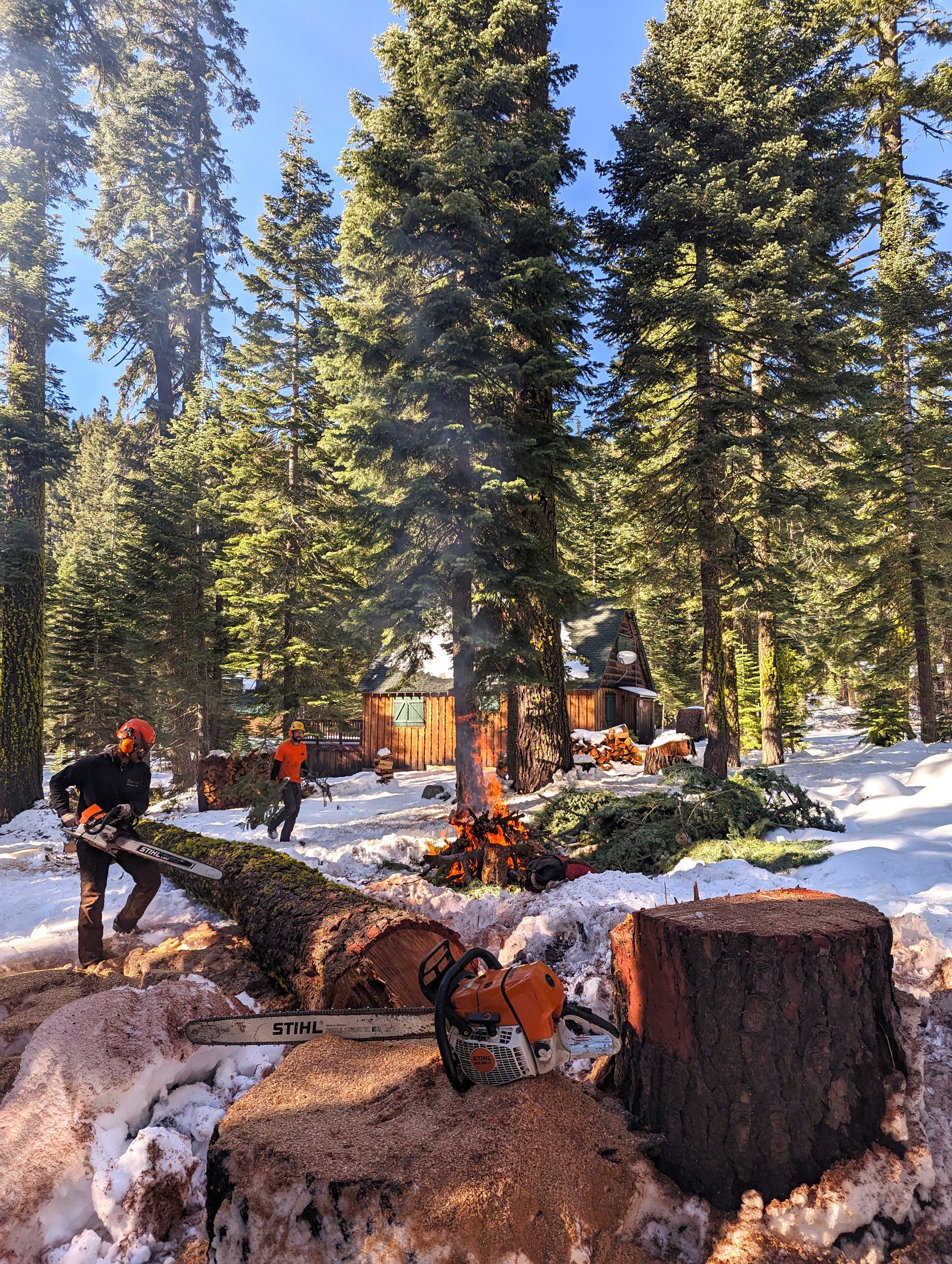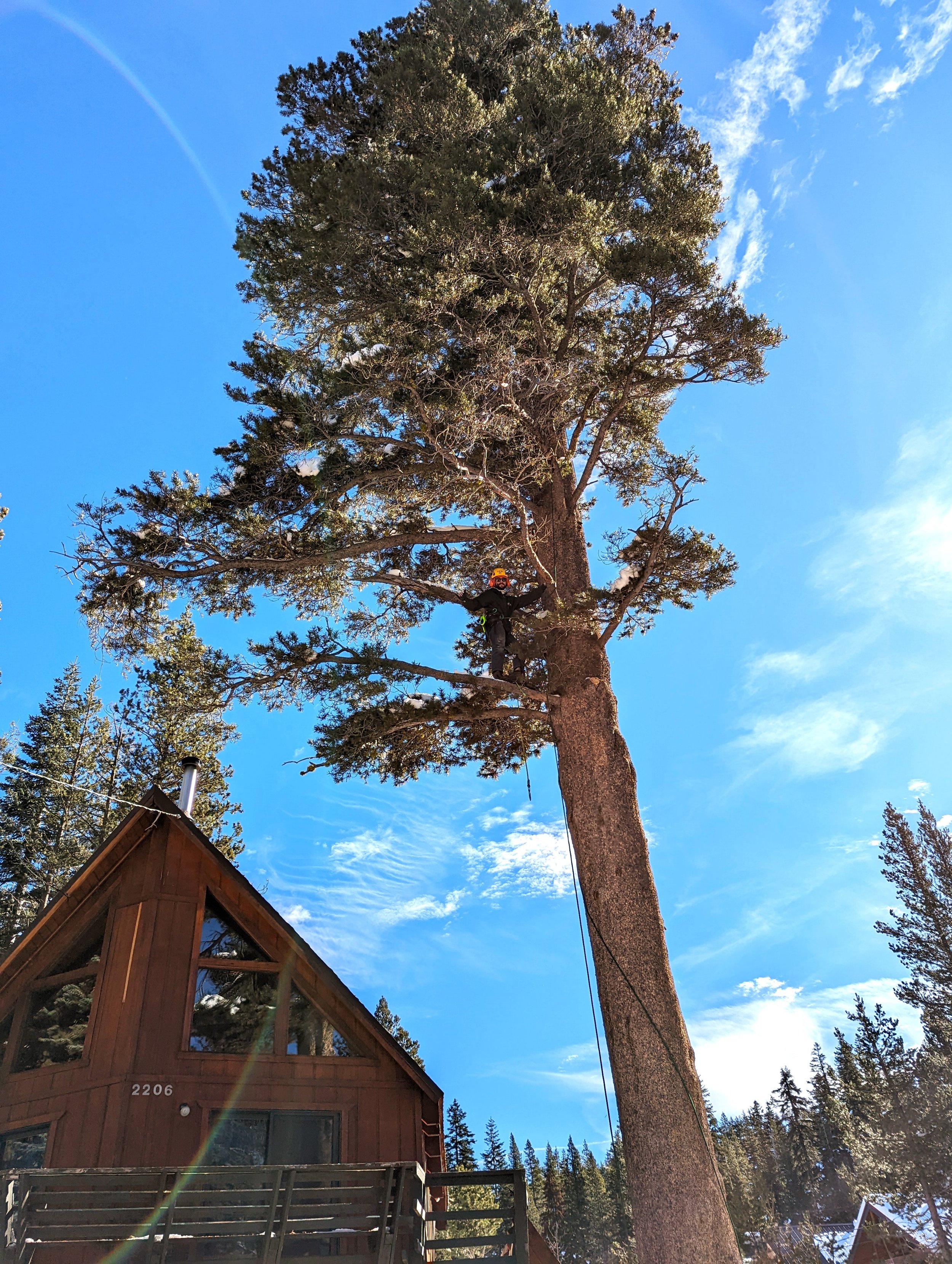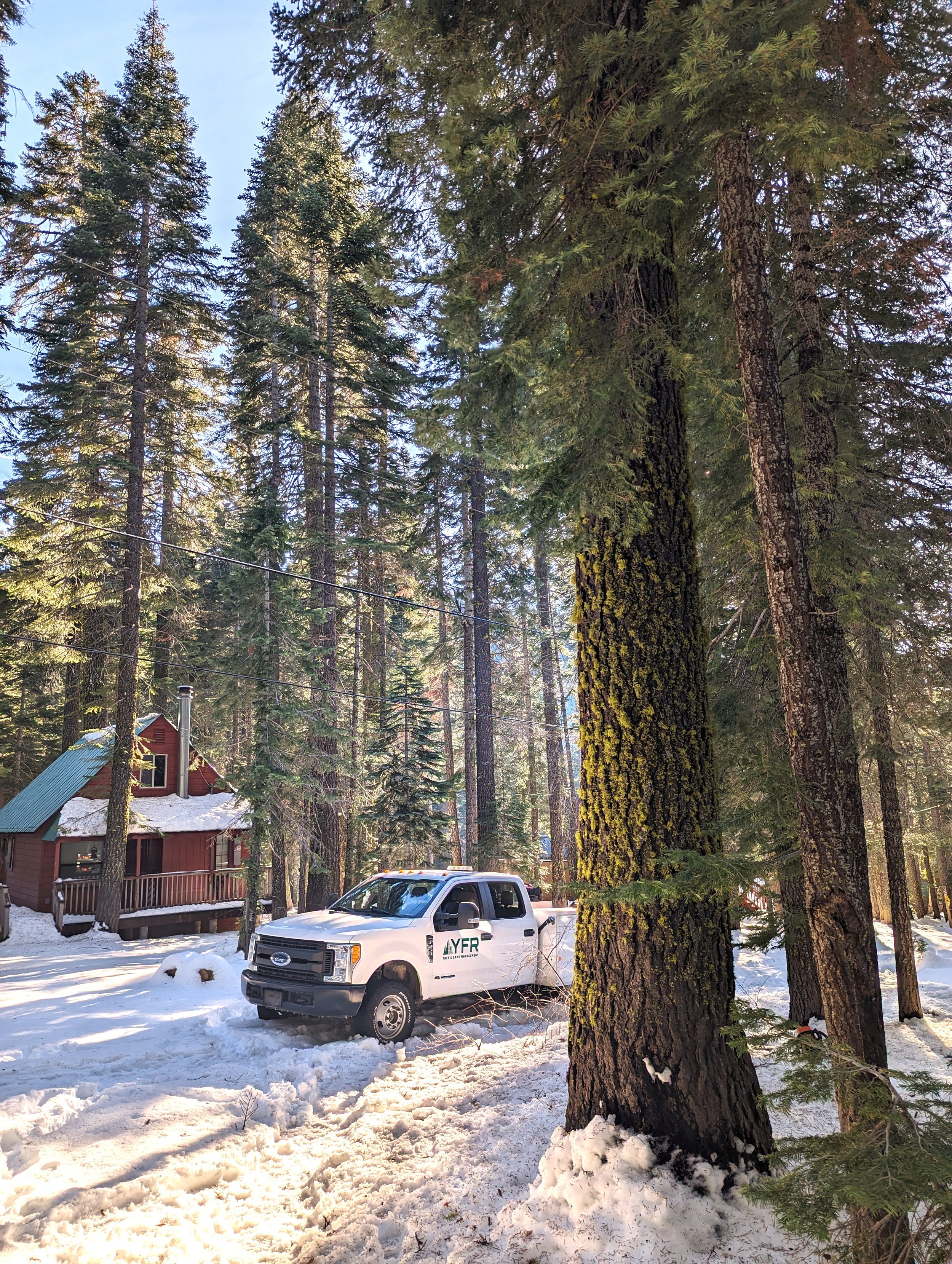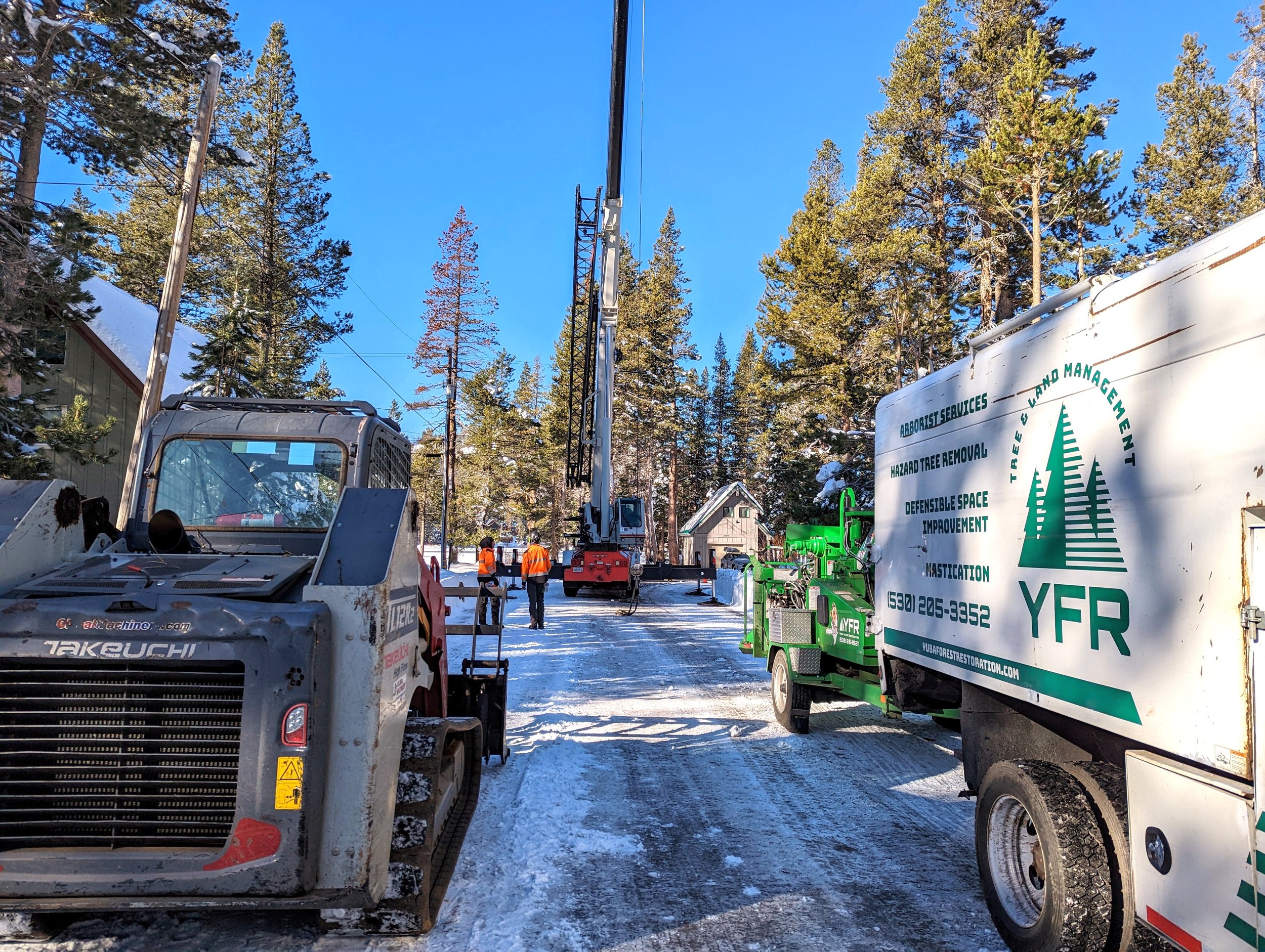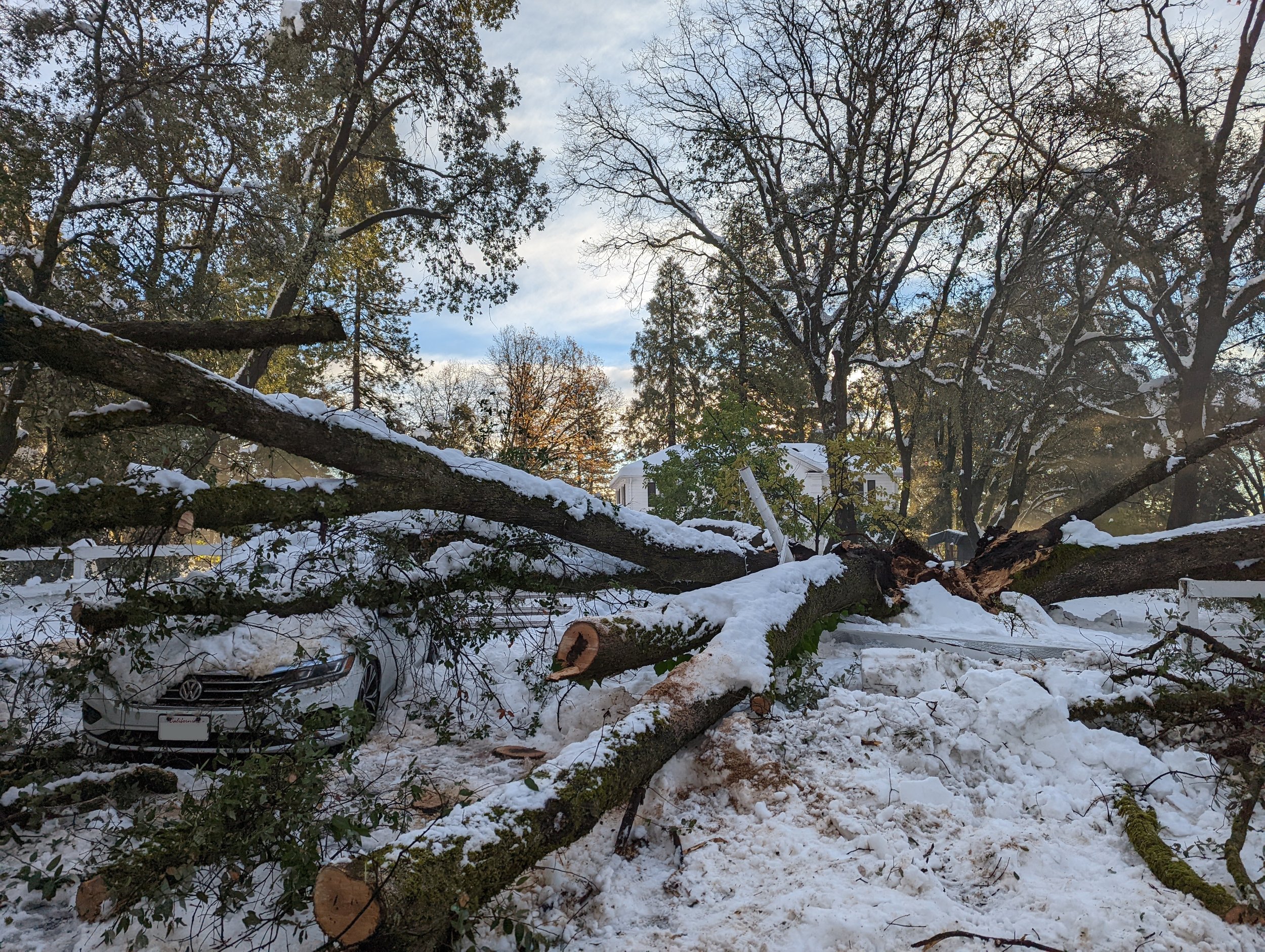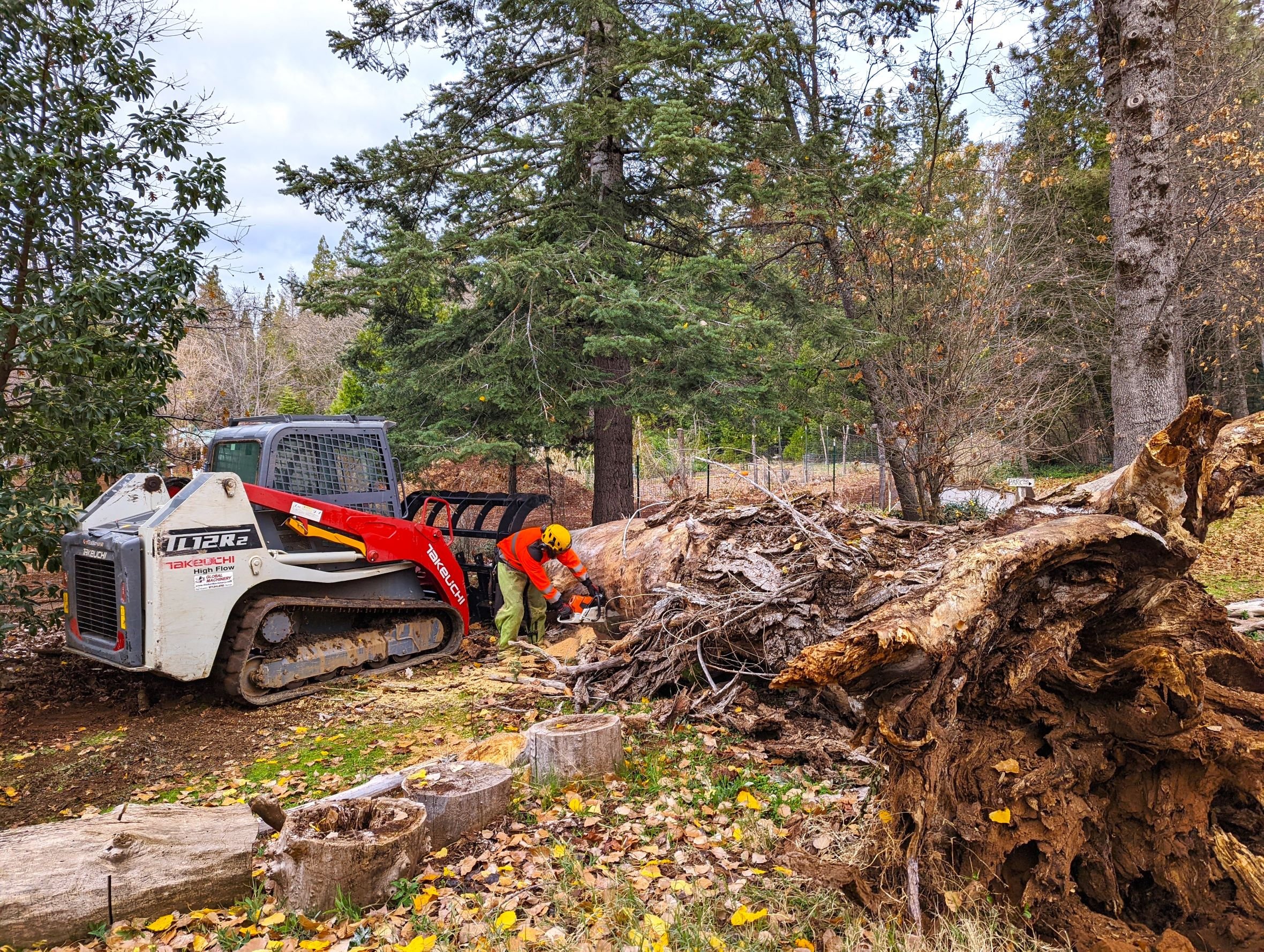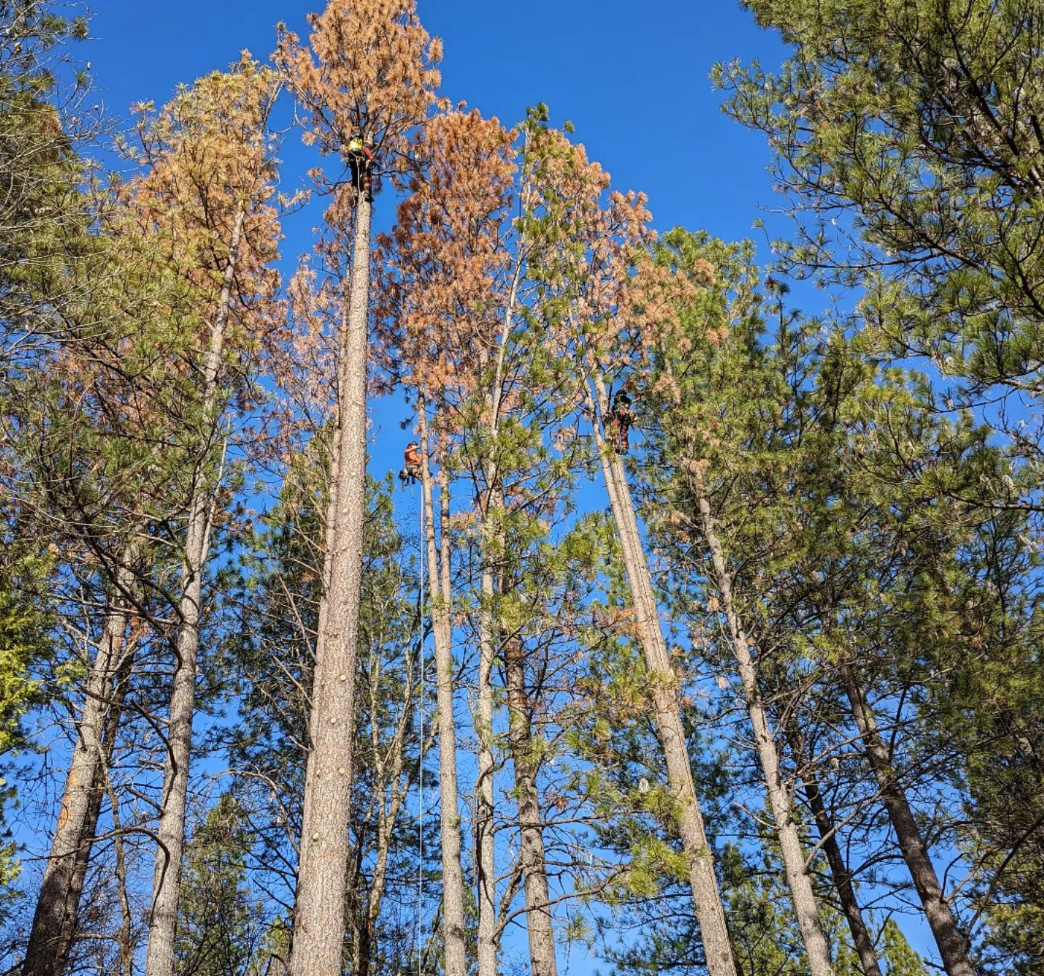Most property owners are not thinking much about tree care in the winter months. Deciduous trees have already put on their autumn show, the days are short and cold, so time spent outside is less. Plus, it’s hard to not get wrapped up in all of the holiday madness. In our region, this is also the time we tend to get the most extreme weather. Neglected tree maintenance is compounded by these weather events in the form of tree and branch failures, damaging property and causing power outages.
How do I ensure that my trees are in good shape heading into the stormy season? ❄️
It is advised that you have a qualified arborist inspect the trees on your property frequently. A qualified arborist is able to spot defects and hazardous conditions, and make recommendations prior to them becoming an issue. Almost all of the failures that we come across could have been prevented if the trees were examined by an arborist prior. Unfortunately, when trees lose large limbs in storms, the damage is often so great that the tree will never recover. It is important to remember that trees need periodic maintenance to stay strong and healthy. If you think that your trees are in need of work, you can call us for a free estimate. We can create an individual pruning plan for your property and keep your trees healthy into the future.
How often do my trees need pruned? ⏳
Of course, the pruning interval varies among species and site conditions, but young trees generally need pruning every 2-5 years, and mature trees every 3-10 years. Some trees like fruit trees however, may need to be pruned annually.
When is the best time of year to prune trees? 📅
We often get asked this question. You might be surprised that the best time of year to prune
What are the advantages of doing tree pruning and removals in the winter? ⚖️
In the winter, the leaves are gone on deciduous trees, making the canopy and tree structure more visible. This allows the arborist to better assess the tree for defects and other hazardous conditions that may be present, as well as make recommendations to mitigate them.
Tree workers aloft in the tree can work more efficiently and safer as limbs used for life support are fully visible.
Pruning during the dormant season gives trees time to heal and compartmentalize their wounds prior to the spring flush of new growth.
Damaging pests are also dormant this time of year. In the Sierra Nevada, the bark beetle is a frequent cause of pine tree mortality. Fresh pruning cuts and material, such as logs, rounds, or woodchips ,left onsite can bean attractant for this destructive beetle and can possibly lead to an infestation and further loss of trees. Whenever possible, we schedule our work on pines in the winter months.
Do you offer tree work in the winter? What about the cold and rain? 👍
Of course! Our team of local full-time employees works throughout the year to care for the trees and forests in our community. Our job keeps us very active, so the cold doesn’t bother us. We don’t mind a bit of rain or snow. The right gear goes a long way to keeping our team comfortable, so we are able to work in all but the worst of weather.

